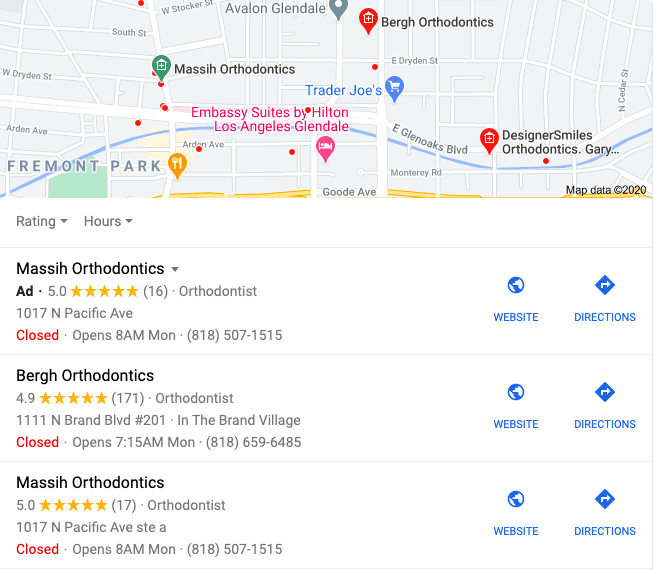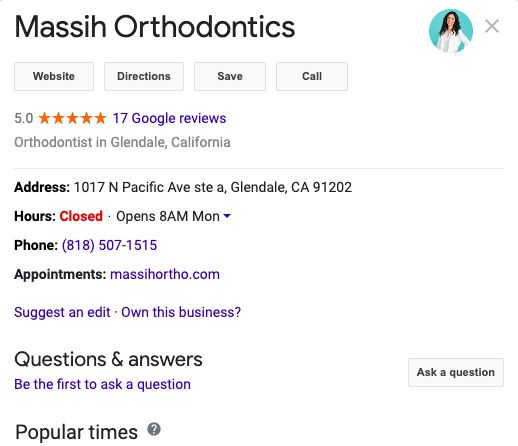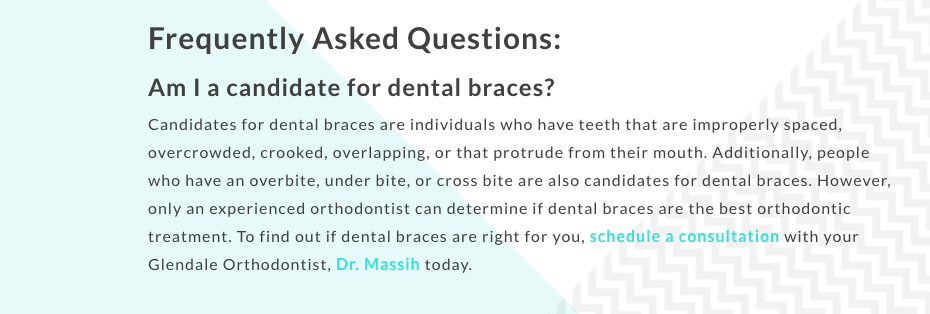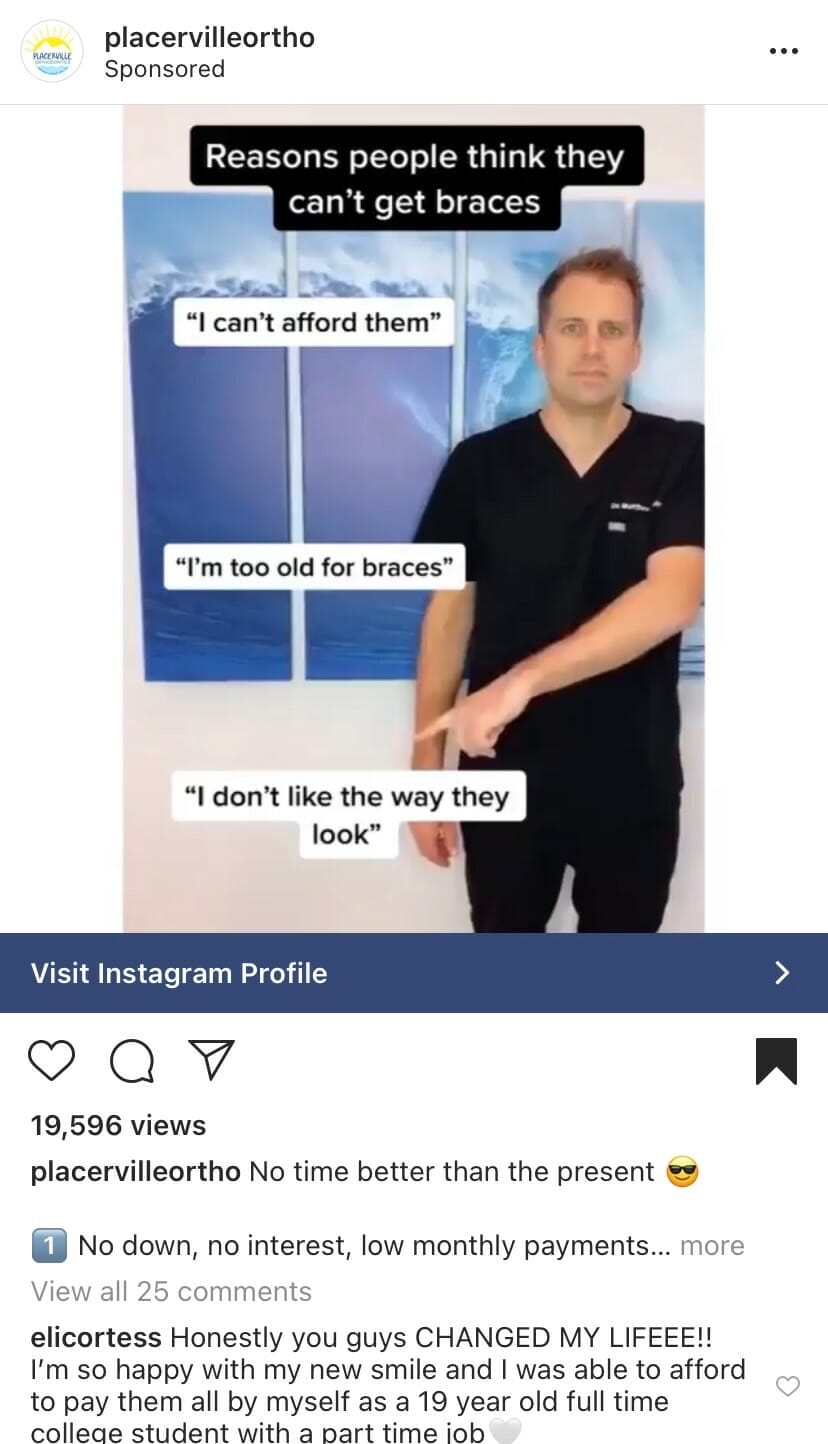Do you want to know how to get your orthodontic practice found on search engines? Ever wonder why some websites rank higher on the search engine results page than others? SEO is the answer.
Optimizing your website for SEO will help it become more visible on search engines like Google or ChatGPT. More visibility means more consultations and a larger patient list. Implementing and following SEO methods will allow your orthodontic practice to grow. To begin, you can start by booking a free strategy session to discuss with our experts, or keep reading for more information on implementing SEO on your own.
Table of Contents
ToggleWhat is SEO?
SEO, or Search Engine Optimization, is the process of making your website easier for people to find on Google and other search engines. When someone types in a question or a service they need, like “orthodontist near me,” search engines show them a list of websites. SEO helps your site appear higher on that list by using the right keywords, creating helpful content, and making sure your site is fast and easy to use. The better your SEO, the more likely people will visit your website and become customers.
.

Strategies and research include:
- Keywords
- Website and URL Structure
- Image optimization and links
- Social media presence
Working on these methods will allow Google to recognize your site and rank it accordingly.
SEO vs Google Ads
SEO and Google Ads are two different ways to get more people to visit your website. SEO, which stands for Search Engine Optimization, is all about improving your website so it shows up naturally in Google search results. This means using the right keywords, writing helpful content, and making your site easy to use. SEO usually takes time to work, but once your site ranks high, you can get a steady flow of visitors without paying for each click.
Google Ads, on the other hand, is a paid advertising tool where you bid money to have your website appear at the very top of search results. You can get visitors right away, but you have to pay every time someone clicks your ad. The big difference is that SEO is more of a long-term investment, while Google Ads gives you quick results as long as you keep paying. Many businesses use both together, Google Ads for instant traffic and SEO for lasting visibility.
Why SEO Is Important For Orthodontists
SEO is very important for orthodontists because the way people find healthcare services has changed. Years ago, families might have asked friends for recommendations or flipped through the phone book to find an orthodontist. Today, almost everyone starts their search online. When parents or teens type “orthodontist near me” or “Invisalign cost in Los Angeles” into Google, the orthodontists who appear at the top of the results get most of the attention and clicks. If your practice isn’t showing up, potential patients are likely choosing your competitors instead.
Good SEO helps make sure your website appears in those top spots by focusing on what people are searching for. This includes optimizing your site for keywords like “braces,” “clear aligners,” and “retainers,” as well as adding your city or neighborhood so local families can easily find you. SEO also makes your website easier to read, faster to load, and mobile-friendly, which keeps visitors from leaving your page and looking somewhere else.
Local SEO
Local SEO is the process of making sure your orthodontic practice shows up in local search results, especially when people nearby search for terms like “orthodontist near me”, “braces in Los Angeles”, or “Invisalign Los Angeles”. Google tries to show the most relevant businesses that are close to the person searching. That’s why orthodontists need local SEO; it connects you directly with patients in your community.
- Most patients choose nearby clinics, and parents want a trusted orthodontist close to home or school.
- Google Maps visibility, showing up in the “map pack” (the top 3 results with a map), gets you more calls and clicks.
- Reviews build trust; families rely on online reviews before picking a doctor.
- Mobile searches dominate; people searching on their phones for “orthodontist near me” often call or book right away.
Google Business Profile (previously called Google My Business)
To make your website more visible on Google, you need to set up Google Business Profile. This allows you to determine how you want your business to show up on Google Maps and on the search engine. You can add in photos, hours of operation, phone number, location, etc.
Setting up a Google My Business account can help you drive more traffic to your site by making it available on maps. It is the number one factor in a local pack.

A local pack is the top 3 search results in a local search. For example, a search on “orthodontists near me.” When setting up your Google My Business account, you must fill out all contact information.

You should also respond to any questions or reviews about your orthodontic practice. Reviews are very important for your SEO, and you should ask patients to leave them for you. Google likes to see that patients trust you through having decent reviews, so it is very important to obtain them.
It is also key to respond to every review. No matter if they are good or bad. By responding to each one, you show that you value the patient experience and that feedback is appreciated.
Competitive Offer
A competitive offer is what makes your orthodontic practice stand out from all the other orthodontists in your area. Since many clinics provide similar treatments like braces and Invisalign, you need to highlight something special that convinces patients to choose you instead of your competitor.
Examples:
- Free initial consultation, attracts new patients who want to explore their options without commitment.
- Flexible payment plans, families often worry about cost, so clear and affordable payment options are a big draw
- Same-day braces, convenience is a powerful selling point.
Benefits of SEO for Orthodontists
SEO allows your practice’s website to gain organic traffic and search results. Organic, in terms of SEO, means on its own, without any paid or ad help. Using SEO methods will bring in passive organic results for you, and can lessen the work and ad spending you do to bring in new patients. However, SEO requires more commitment than orthodontic google ads.
It is also an almost free way for you to bring in patients. The only thing you are spending on SEO for your orthodontic practice is time.
If your time is too valuable to spend on learning SEO, we can do it all for you!
There are many aspects to SEO, but the easiest way to break them down is to put them into on-page and off-page categories.
On-page SEO for your Orthodontic Website
On-page SEO means improving the parts of your website that you control so Google can better understand your pages and show them to the right people. For orthodontists, strong on-page SEO helps your site rank higher when patients search for things like “braces near me” or “Invisalign cost in Los Angeles” or whatever your city is.
Loading Time
Your website and pages all need to load fast. If it takes too long to load, people will click out of it and not consider looking at what you have to offer. Use websites like Pingdom and GTmetrix to check your website’s and pages’ loading time.
Make sure to check your image files and compress them if they are too large. Having large files on your pages can slow down the page speed. You should also double-check the code and make sure that there isn’t anything unnecessary in there.
URL Structure
When it comes to URL structure, this simply means having concise and straight-to-the-point URLs. When creating pages on your website, you should not have super-long URLs.
The key to structuring a great URL is to:
- Cut out unnecessary words, ex, the
- Get rid of punctuation
- Keep them concise
- Use keywords
Ex:
- orthdontist.com/dental-appliances/invisalign/invisalign-for-adults
- orthodontist.com/invisalign/invisalign-for-adults
- orthodontist.com/invisalign-for-adults
In these examples, the important information and page you want viewers to get to is information about Invisalign for adults. As you can see, option 3 is the best for a structured URL. The first one is too long and doesn’t show the actual keyword until the very end.
The second option is better, but this indicates that Invisalign for adults is a subsection of an Invisalign page. If you are trying to rank for this keyword, it is better for it to have its own page.
When structuring your URLs, keep your keyword as close to the root as possible.

Image Alt-tags
Adding alt-tags / alt attributes/alt descriptions allows your website to be more accessible to the visually impaired. These give images context and meaning on your website.
Alt-tags are also great for SEO. The context you give your images allows them to be read better by Google’s site crawlers to index your website.

Title Tags
A title tag is the headline that shows up on Google when someone searches for orthodontic services, like braces or Invisalign. It tells both Google and potential patients what your page is about, which makes it one of the most important parts of on-page SEO.
For orthodontists, a good title tag should include the main service you offer, the city you’re located in, and something that makes your practice stand out, such as “free consultation” or “affordable braces.” For example, a strong title tag could be “Orthodontist in Los Angeles/ Braces & Invisalign Smile Orthodontics.” A clear and well-written title tag not only helps your website rank higher but also encourages people to click on your practice instead of a competitor’s.

Compressing Large Images
Compressing large images is an important part of SEO because it helps your website load faster. When images are too big, they take longer to display, which can make visitors leave your site before it even finishes loading.
For orthodontists, this is a big deal because patients want quick access to information about braces, Invisalign, and appointment booking. By compressing images, meaning reducing their file size without losing much quality, you make your site faster, easier to use, and more mobile-friendly. Search engines like Google also reward fast websites with better rankings, so smaller image sizes can directly improve your SEO. There are many free tools, like TinyPNG, that can shrink file sizes while keeping photos of your office, staff, and before-and-after results looking sharp.
Want to learn more about SEO for your dentistry?
Meta Description
A meta description is a text shown below the link in the search engine results.

Since this will show up anytime someone searches for your site or a page on your site, you need to make this eye-catching. It is another opportunity to grab viewers’ attention. Each page and post on your site needs a meta description. Make sure to include keywords that are relevant to the page on your site.
Ex:
- Homepage
- Your keyword should not be “homepage!” In the YoYoFuMedia homepage example, keywords like Google Ads and SEO are used.
- For your homepage use keywords like “orthodontist + location,” or “Invisalign services.”
- Services page
- The keywords for a service page on your website should be the name of the service.
- Ex: “Invisalign for adults,” and “Dental Braces.”
Include your targeted keywords and highlight aspects of what your site’s page is about. You can include a testimonial of your services in the meta description to showcase the benefits of your work. Or you can talk about your expertise in the orthodontic industry.
Internal and Outbound Links
Linking to websites and pages, in general, adds value to them. Think of links as a vote of confidence, and by including the one, you are letting search engines know that the link is reputable.
Internal links are links to your other pages and content on your website. These can help provide more context to your readers and add some value to other pages. Internal links can help rank the pages you link to higher in the SERP. It is important to recognize that you should only link your pages when necessary. Don’t add irrelevant internal links to pages that have nothing to do with what you are linking to.
For example, a blog post on your orthodontic website about dental braces can include a link to schedule a consultation.

Massih Orthodontics did this on their site, which is a perfect example of internal linking.
Outbound links are links out to other websites. This connects your site and other ones, which lets Google know you are associated with them. You should link to well-known and trusted sites in the orthodontic industry.
Optimizing Website
Optimizing your website means making it work better for both visitors and search engines. For orthodontists, this is important because potential patients will decide within seconds if they want to stay on your site or leave. A well-optimized website loads quickly, looks good on mobile phones, and is easy to navigate.
It should also clearly explain your services like braces, Invisalign, and retainers while giving patients an easy way to book an appointment. Adding clear headings, simple menus, and strong calls-to-action (like “Schedule a Free Consultation”) helps guide visitors to the next step. On the technical side, optimization also means fixing broken links, compressing large images so pages load faster, and keeping your site secure with HTTPS. The better your website is optimized, the more likely Google will rank it higher in search results, which means more patients finding your practice online.
Improve Readability
Improving readability means making your website content easy to understand for everyone who visits. Patients searching for an orthodontist don’t want to read long, complicated text filled with technical dental terms. Instead, they want clear, simple information that quickly answers their questions, like “How much do braces cost?” or “Does Invisalign hurt?”.
To improve readability, use short sentences, break text into small paragraphs, and add headings so people can scan. Bullet points and numbered lists also make information easier to digest. You can also include images, charts, or before-and-after photos to explain things visually. When your content is simple and engaging, patients are more likely to stay on your site, trust your expertise, and book an appointment. Plus, Google rewards websites that are easy to read, which can help improve your SEO rankings.
Is on-page SEO too much work for you to do alone?
Off-page SEO for an Orthodontist
Off-page SEO means everything you do outside your website to improve your rankings and online reputation. While on-page SEO focuses on your site (like keywords, titles, and content), off-page SEO is about building trust, authority, and visibility across the internet. For orthodontists, this is especially important because patients rely on reviews, recommendations, and online credibility before booking an appointment.
Quality Backlinks
As mentioned earlier, a link is a vote of confidence and trust. A backlink is a link back to your site from another website. Just like how important it is to include internal and outbound links on your website, you need other websites to link to yours.
Since this is an SEO for orthodontists guide, it would make the most sense to obtain backlinks from others in your industry. If any practicing dentists at your orthodontic office have their website, they can link to you. Even suppliers of dental appliances can link to your website.
You can check where you are obtaining backlinks from on the Ahrefs free backlink checker.
Citations
Citations are online directories where your business can be linked to and mentioned. An example of this would be the Yellow Pages, Yelp, or even LinkedIn. This is another great way to obtain backlinks and make your orthodontic practice more reputable online.
Another method besides searching for directories to input your business information on is to use Ahrefs backlinks checker. You can use it for citation research by searching for your competitors’ domains on there and seeing what citations they are part of. Wherever they are, you need to be as well.
Another great place to make sure your website is visible is on Apple Maps. You must have an Apple ID to do this, and you can sign in to claim your business. Upload all contact information and photos to the site just like you did with Google My Business.
Social Media
In these times, all businesses must have social media accounts. It serves as social proof that you are reputable and can be trusted. People like to see what services they will be paying for. It will be highly beneficial for you if you offer that social proof by posting photos and videos of Invisalign, dental braces, and other services.
Determine which social media sites are best for you and what you feel comfortable with. If you want to attract older patients, then make a Facebook page. Looking for younger patients and don’t mind making video content? Try TikTok. Know that you can repurpose your content across all platforms.

In this example, an orthodontic practice used a TikTok video as advertising on Instagram. You don’t need to create something completely new for each social media site. Just adapt it.
Learn more about how to use social media to market for orthodontists.
Content Marketing
Content marketing is the practice of creating and sharing helpful, engaging information that answers your patients’ questions and builds trust with your audience. Instead of just promoting your services, content marketing focuses on educating, informing, and guiding people so that when they’re ready to choose an orthodontist, they already trust your practice.
Why Content Marketing Matters
- Builds trust and authority, patients see you as the expert in braces, Invisalign, and orthodontic care.
- Improves SEO, Google rewards websites that publish fresh, valuable content with higher rankings.
- Answers patient questions, content like blog posts and videos saves time by addressing common concerns upfront.
- Increases conversions, patients are more likely to schedule an appointment if they feel informed and confident.
Online Forums
Online forums are a great way for orthodontists to connect with people who are asking questions about braces, Invisalign, and other treatments. Parents and patients often visit forums, Facebook groups, or Q&A websites to get advice before choosing an orthodontist. By joining these conversations and giving helpful, honest answers, you can build trust and show your expertise without sounding like you’re only trying to sell your services.
For example, if someone asks about the cost of Invisalign in your city, you can explain how prices work and mention that your office offers free consultations. This not only helps the person asking but also shows everyone else in the forum that you are knowledgeable and approachable, which can lead to more patients choosing your practice.
Local Listings
Local listings are online directories that show important details about your orthodontic practice, like your name, address, phone number, and website. They help patients find you when they search for terms like “orthodontist near me” or “Invisalign in Los Angeles.” Having accurate and consistent listings on sites like Google Business Profile, Yelp, and Facebook makes your practice look more trustworthy and professional. It also improves your chances of showing up in Google’s local search results, which means more people in your community can discover and contact your office.
Understanding Keywords
Keywords are the words people type into Google when they’re searching for something, like “braces near me” or “Invisalign cost in Dallas.” For orthodontists, using the right keywords on your website helps Google understand what services you offer and makes it easier for patients to find you online. Short keywords like “braces” bring in lots of searches but also have more competition, while longer ones like “best orthodontist for kids in Houston” may get fewer searches but attract people who are more likely to book an appointment. By choosing and using the right keywords, you can reach the patients who need your services the most.
Monthly Search Volume
Monthly search volume tells you how many times people search for a specific keyword on Google in a single month. For example, if the keyword “orthodontist near me” has a monthly search volume of 10,000, that means people typed it into Google about 10,000 times in one month. For orthodontists, looking at search volume helps you understand which keywords are the most popular and which ones patients in your area are using.
High search volume keywords, like “braces” or “Invisalign,” can bring a lot of traffic but are often harder to rank for because many competitors target them. Lower search volume keywords, such as “affordable braces for teens in Los Angeles,” may bring fewer searches but usually attract patients who are closer to booking an appointment. By balancing high and low search volume keywords, orthodontists can create an SEO strategy that drives both visibility and new patients.
Keyword Difficulty
Keyword difficulty measures how hard it is to rank for a specific search term on Google, and it’s especially important in a competitive city like Los Angeles. Broad keywords such as “orthodontist Los Angeles” or “Invisalign Los Angeles” have very high difficulty because dozens of established practices and national dental chains are trying to rank for them.
On the other hand, more specific long-tail keywords like “affordable braces in Santa Monica” or “best orthodontist for teens in Beverly Hills” usually have lower difficulty, which gives smaller or newer practices a better chance to appear on the first page. By balancing high-difficulty keywords that bring visibility with lower-difficulty keywords that attract ready-to-book patients, orthodontists in Los Angeles can build a stronger, more effective SEO strategy.
Using Relevant Keywords
Using relevant keywords means adding the exact words and phrases that people in Los Angeles are typing into Google when they search for orthodontic services. For example, a parent might search “braces for kids in Santa Monica,” while a young professional may type “Invisalign cost in Downtown Los Angeles.” By placing these keywords naturally in your website’s titles, headings, and blog posts, you help Google understand what your practice offers and where you are located.
This makes it easier for local patients to find you online instead of a competitor. Choosing the right mix of general terms like “orthodontist Los Angeles” and specific long-tail keywords such as “affordable braces in Beverly Hills” ensures your practice attracts both broad searches and highly targeted patients who are ready to schedule an appointment.
Choosing The Right Target Keywords
Choosing the right target keywords is one of the most important steps in SEO for orthodontists in Los Angeles. Since the city is so competitive, you need to focus on the keywords that will bring in new patients instead of just chasing high-volume terms. Broad keywords like “orthodontist Los Angeles” or “braces Los Angeles” are valuable, but they’re also very difficult to rank for because so many practices are targeting them.
To stand out, it’s smart to also target long-tail and location-specific keywords such as “Invisalign for adults in Beverly Hills” or “affordable braces for teens in Santa Monica.” These may get fewer searches, but they attract patients who are more likely to schedule an appointment. By combining a few high-volume keywords for visibility with more specific ones that bring in ready-to-book patients, you can create a balanced strategy that helps your practice grow in Los Angeles.
Long-Tail Keywords
Long-tail keywords are longer, more specific search phrases that patients in Los Angeles use when looking for orthodontic care. Instead of just typing “orthodontist Los Angeles,” a parent might search “best orthodontist for kids in Santa Monica” or “affordable braces for teens in Beverly Hills.” These types of keywords usually have fewer searches compared to broad ones, but they are less competitive and often attract patients who are closer to making a decision.
Short-Tail Keywords
Short-tail keywords are very broad search terms made up of one to two words, like “braces,” “Invisalign,” or “orthodontist.” These keywords usually have a very high search volume, meaning lots of people type them into Google each month. However, because they are so general, they also have very high competition, making it harder for smaller practices to rank for them.
While short-tail keywords can bring a lot of visibility, they don’t always show strong search intent since the person searching might just be looking for information rather than ready to book an appointment. For orthodontists, short-tail keywords are still important because they can increase awareness, but they work best when combined with more specific long-tail keywords that attract patients who are ready to take action.
Keyword Research Tools
Keyword research tools help you discover which words and phrases people are typing into Google when they’re looking for orthodontic services. These tools give you valuable data like search volume (how many people search for the keyword each month), keyword difficulty (how hard it is to rank for), and related keyword suggestions. For orthodontists, using these tools makes it easier to find the best mix of broad keywords, like “braces” or “orthodontist,” and more specific ones, like “Invisalign for teens near me.”
Googles Autocomplete Predictions
Google’s Autocomplete Predictions are the suggested phrases that appear in the search bar when you start typing a word or question. For example, if you type “braces” into Google, you might see suggestions like “braces cost,” “braces before and after,” or “braces near me.” These predictions are based on what other people commonly search for, so they give you a direct look at what real patients want to know.
For orthodontists, autocomplete is a free and simple way to find keyword ideas and understand patient concerns. If you type “Invisalign” into the search bar, you may see predictions like “Invisalign cost,” “Invisalign vs braces,” or “Invisalign pain.” Each of these can inspire new blog posts, FAQ sections, or service pages on your website. Using autocomplete predictions helps you create content that matches real searches, which increases the chances of your website showing up when patients are looking for orthodontic care.

Googles Related Searches
Google’s Related Searches are the extra search suggestions that appear at the bottom of the search results page. They show you other phrases people often look for after searching for your keyword. For example, if you search “braces,” the related searches might include “braces cost per month,” “best age to get braces,” or “clear braces vs metal braces.”
For orthodontists, Google’s Related Searches is a free and simple tool to discover what potential patients are interested in. These suggestions can inspire new blog posts, service pages, or FAQs that directly answer common questions. For instance, if “Invisalign cost near me” shows up in related searches, creating a page or article about Invisalign pricing can help your website rank for that exact term. By paying attention to related searches, you can better understand patient needs and create content that matches their search intent.

Googles Keyword Planner
Google’s Keyword Planner is a free tool that helps you find the best keywords for your website. It shows you how many people search for certain words each month, how competitive those words are, and gives you suggestions for related keywords. For example, if you type in “braces” or “orthodontist,” the tool might also suggest terms like “affordable braces,” “Invisalign cost,” or “braces near me.”
For orthodontists, Google Keyword Planner is especially useful because it reveals exactly what potential patients are searching for in your area. You can use it to discover new keyword ideas for your service pages, blog posts, and ads. The tool also helps you understand search trends like whether more people are looking for “Invisalign” compared to “traditional braces.” By targeting the right keywords from Keyword Planner, orthodontists can reach more patients, improve local SEO, and create content that matches real search intent.

Ahrefs Free Keyword Generator
Ahrefs Free Keyword Generator is a tool that gives you keyword ideas along with useful data like search volume and keyword difficulty. Unlike Google Keyword Planner, which is mainly designed for advertisers, Ahrefs shows you SEO focused insights that help you understand how hard it might be to rank for a keyword. All you have to do is type in a word like “braces” or “Invisalign,” and the tool will instantly show you a list of related keywords people are searching for.
For orthodontists, this tool is valuable because it helps uncover both high-volume keywords (like “orthodontist near me”) and more specific long-tail keywords (like “how much do braces cost for kids”). You can also see the keyword difficulty score, which tells you how much competition you’ll face if you try to rank for that word. Since it’s free and simple to use, Ahrefs Free Keyword Generator is a great starting point for orthodontists who want to improve their SEO strategy without paying for expensive software.

Why “orthodontist near me”is a good keyword
-
High Buyer Intent: People searching “orthodontist near me” are usually ready to book a consultation for braces, Invisalign, or other orthodontic treatments. They’re not browsing casually they’re seeking care.
-
Local Relevance: Orthodontics is a location-based service. Patients want a clinic close to home, school, or work for convenience since treatments often require multiple visits.
-
Direct Conversions: This keyword attracts people at the decision stage they already know they need an orthodontist, and now they’re choosing which one to call.
-
Visibility in Google Maps: Ranking for “orthodontist near me” boosts your chances of appearing in Google’s Local 3-Pack, where most patients click first.
Why “orthodontist salary”is a bad keyword
-
Wrong Audience: Most people searching this are students or job seekers, not patients.
-
No Buyer Intent: They want to know income levels, not schedule braces or Invisalign.
-
Low ROI: Even if your site ranks, this traffic won’t convert into new patients.
Why “difference between dentist and orthodontist” is a bad keyword
-
Informational Only: Searchers are just trying to learn about roles, not find treatment.
-
Mismatched Audience: This attracts curious readers, students, or general researchers, not paying patients.
-
Weak Conversions: Even if they land on your site, most won’t book an appointment.
Understanding Search Intent
Search intent is the reason behind someone’s Google search, the “why” behind the words they type. When a person searches for something like “braces cost,” they may want to compare prices. If they search “orthodontist near me,” they’re probably looking for a local office to schedule an appointment. Knowing the search intent helps orthodontists create the right kind of content that answers patients’ real questions.
Informational Intent
Informational intent is when someone searches on Google because they want to learn something, not necessarily to buy right away. These searches are often in the form of questions, like “How long do braces take?” or “Does Invisalign hurt?” For orthodontists, this type of intent is important because it shows what patients are curious about before making a decision.
Navigational Intent
Navigational intent is when someone searches for a specific brand, business, or website. Instead of looking for general information, the person already knows where they want to go; they just use Google to get there. For example, someone might search “Invisalign website” to go directly to the official Invisalign site, or “Dr. Smith Orthodontics reviews” if they already know the practice by name.
For orthodontists, navigational intent is important because it means potential patients are already aware of your practice. They may be searching for your office name, your reviews, or even directions to your clinic. That’s why it’s critical to keep your Google Business Profile updated, make sure your practice website appears when people search your name, and manage online reviews. When patients with navigational intent search for you, they’re often just one step away from booking an appointment, so you want to make sure they can find you easily.
Commercial Intent
Commercial intent is when someone searches because they are comparing options and thinking about making a purchase, but they haven’t decided yet. These searches usually happen when patients are weighing their choices, like which orthodontist to choose, what type of treatment to get, or how much it will cost. For example, someone might search “best orthodontist near me,” “braces vs Invisalign,” or “affordable orthodontist reviews.”
For orthodontists, commercial intent is a valuable stage because it shows that the person is seriously considering treatment. They’re not just learning, they’re comparing providers, prices, and services. To capture this audience, your website should highlight what makes your practice stand out. This could include showcasing patient testimonials, before and after photos, transparent pricing information, or blog posts that compare treatments. By answering their questions and showing why your practice is the best choice, you can guide patients from research to booking an appointment.
Transactional Intent
Transactional intent is when someone is ready to take action, like booking an appointment, calling an office, or purchasing a service. These searches usually include words that show urgency or a clear decision, such as “schedule orthodontist consultation,” “book Invisalign appointment,” or “orthodontist near me open today.” Unlike informational or commercial searches, the person isn’t just learning or comparing; they’re prepared to act.
For orthodontists, transactional intent is the most valuable type of search because it often leads directly to new patients. To capture these searches, your website should make it easy for patients to take the next step. This means having clear “Book Now” buttons, easy-to-find contact information, online appointment scheduling, and a mobile-friendly site. If a parent searches “orthodontist for kids appointment near me,” and your site allows them to schedule right away, you’ll likely win that patient.
Technical SEO
Technical SEO is all about making sure your website works smoothly so Google can easily find, understand, and rank it. Even if you have great content, your site won’t show up high in search results if it loads too slowly, isn’t mobile-friendly, or has broken links. Technical SEO focuses on the behind-the-scenes parts of your website that improve performance, security, and user experience.
Website Security
Website security is an important part of technical SEO because it keeps your site safe for both you and your patients. Google favors secure websites and shows them higher in search results because it wants users to feel safe when browsing. The easiest way to secure your site is by using HTTPS instead of HTTP. You can tell if a site is secure by the little padlock symbol in the browser’s address bar.
For orthodontists, website security is not just about SEO; it’s about trust. Patients may fill out contact forms, book consultations, or even share personal details online. If your site isn’t secure, this information could be at risk, and patients may feel uncomfortable. On top of that, Google may warn users if your site is unsafe, which could scare potential patients away. By installing an SSL certificate (which enables HTTPS), keeping your site updated, and protecting against hacks, you make sure patients feel confident when visiting your website, and you boost your chances of ranking higher in search results.
Page Speed
Page speed is how fast your website loads when someone clicks on it. Google considers speed an important ranking factor because people don’t like waiting. Most visitors will leave a website if it takes more than a few seconds to load. That means a slow site not only hurts your SEO but also causes you to lose potential patients.
For orthodontists, page speed matters because most patients search on their phones and want quick answers. If your website takes too long to load, a parent looking for braces or Invisalign might click away and choose another orthodontist with a faster site.
Mobile Friendly Website
A mobile-friendly website looks good and works smoothly on smartphones and tablets. Since most people search for orthodontists on their phones, Google gives higher rankings to websites that are easy to use on smaller screens. If your site is hard to navigate on a phone, like text being too small, buttons being hard to click, or pages not fitting the screen, patients are more likely to leave and look elsewhere.
For orthodontists, having a mobile-friendly website is critical. A parent searching “orthodontist near me” from their phone might be in a hurry and wants quick, clear information like office hours, location, and how to book an appointment. If your site loads well, has readable text, clickable buttons, and a simple layout, it makes it easy for them to take action. A mobile-friendly design not only improves user experience but also boosts your SEO, helping your practice stand out in local searches.
Keyword Cannibalization
Keyword cannibalization happens when multiple pages on your website are focusing on the same keyword, and they end up competing against each other in Google. Instead of boosting your rankings, this can confuse search engines about which page is the most important. As a result, both pages may rank lower, or the wrong page might show up in search results.
For example, if an orthodontist has two separate pages targeting “Invisalign cost,” one as a blog post and another as a service page, Google might struggle to decide which page to rank. This can hurt SEO performance because the authority and traffic are split between multiple pages instead of being focused on one.
To fix keyword cannibalization, orthodontists should review their content and make sure each page has its own unique keyword focus. Sometimes the solution is merging similar pages into one stronger page, or adjusting keywords so each page covers a slightly different topic. By organizing keywords properly, you help Google understand your website better and make it easier for patients to find the right information.
Fixing Duplicate Contents
Duplicate content happens when the same or very similar text appears on more than one page of your website or even across different websites. This can confuse Google because it doesn’t know which version to rank. As a result, both pages may rank lower, or your website could lose visibility in search results.
For orthodontists, duplicate content might occur if you copy service descriptions from another dental site, have multiple location pages with the same wording, or if your website creates duplicate versions of pages.
Fixing Broken Links
Broken links are links on your website that no longer work; when someone clicks them, they end up on an error page instead of useful information. This hurts your website in two ways: it creates a poor experience for visitors and signals to Google that your site isn’t being maintained, which can lower your rankings.
For orthodontists, broken links can happen if you remove an old service page, change a URL, or link to another website that has since taken down its page. For example, if you had a blog linking to a dental association article that no longer exists, that link would be considered broken.
Fixing broken links is important for both SEO and patient trust. To do this, orthodontists should regularly check their site using tools like Google Search Console or online broken link checkers. Broken links can either be updated to the correct URL, redirected to a new page, or removed altogether. By keeping all links working, you make your website smoother to navigate, keep visitors engaged, and show Google that your site is reliable.
Improving User Experience (UX)
User experience (UX) is about how easy and enjoyable it is for people to use your website. Google pays close attention to UX because if visitors are happy and stay on your site, it’s a sign your website is valuable. On the other hand, if your site is confusing, slow, or hard to navigate, people will leave quickly, which can hurt your SEO rankings.
For orthodontists, improving user experience means making your website simple, clear, and helpful for patients. That includes having a clean design, easy-to-read text, clear menus, and fast-loading pages. A parent looking for braces for their child doesn’t want to dig through cluttered pages; they want quick access to services, pricing, reviews, and how to book an appointment. Adding features like click-to-call buttons, online scheduling, and an FAQ section can also make your site more user-friendly.
When patients enjoy using your site, they’re more likely to stay longer, learn about your services, and take action. Plus, Google rewards websites with good UX by ranking them higher in search results. In short, a better user experience means happier patients and stronger SEO.
Track your SEO Progress
Once you have everything set up and are continuously using SEO practices, you can track how you are showing up in the SERP. Use Google Search Console to check out what positions you are showing up in on the search engine, how many impressions you are getting, and clicks.
This allows you to know where your search traffic is coming from and what kind of content is working for you.
AI SEO (aka LLM SEO, GEO, GSEO, ChatGPT SEO)
What is AI SEO?
AI SEO, also called LLM SEO, GEO, or GSEO, is the practice of optimizing content for AI powered search tools such as ChatGPT, Gemini and Perplexity. Unlike traditional SEO that focuses heavily on Google keywords and rankings, AI SEO ensures that when someone asks AI about orthodontic treatments like braces, Invisalign, or jaw alignment your practice appears as a trusted recommendation.
Why It Matters for Orthodontists
Patients searching for orthodontic solutions are no longer relying only on Google. Increasingly, they turn to AI tools for quick, clear answers about treatment options, costs, and timelines.
If your website offers the same generic information found everywhere else, AI won’t prioritize it. However, if you provide unique, experience-based content like explaining how you customize Invisalign treatment, or offering detailed insights into managing orthodontic care for teens vs. adults your expertise becomes more valuable, and AI is more likely to recommend your practice.
How AI SEO Works
AI SEO isn’t about keyword stuffing terms like “orthodontist near me.” Instead, it relies on entity-based content planning, where related topics are covered in depth. For orthodontists, that means including entities like “clear aligners,” “bite correction,” “retainers,” “jaw alignment surgery,” and “early orthodontic treatment for children.”
By covering a wider range of related terms, your content demonstrates authority and relevance to AI models, making it more likely to be surfaced in AI-driven answers.
Content Uniqueness and Authority
AI models reward original insights and penalize content that’s too generic. For orthodontists, this could mean sharing new information AI doesn’t already have: patient FAQs, step-by-step treatment timelines, real-world before-and-after case examples (with permission), or even your professional insights on new orthodontic technology. The more unique and specific your content, the higher your chances of being cited or recommended in AI responses.
The Role of YouTube, PR, and External Mentions
Video content is particularly powerful for orthodontists. YouTube videos explaining how braces work, what to expect during adjustments, or tips for caring for Invisalign trays not only help patients but also give AI models fresh content to summarize. Similarly, PR articles or mentions in dental associations establish your authority and credibility, which AI tools use as trust signals when surfacing orthodontic recommendations.
How Different AI Platforms Prioritize Content
Each AI search platform has its own way of evaluating orthodontic content:
-
ChatGPT values clear, well-structured explanations with entity-rich detail, making it effective for patient education content.
-
Gemini (Google’s AI) emphasizes authority and accuracy, so external validation and authoritative references matter more.
-
Perplexity highlights sources and citations, which means linking to dental associations, research studies, or trusted orthodontic organizations can increase visibility.
By aligning your orthodontic content with these priorities, you can maximize visibility across multiple AI-driven platforms.
Common SEO Mistakes To Avoid
Even with the best intentions, many orthodontists make simple SEO mistakes that hurt their rankings and drive patients to competitors. Knowing what to avoid can save you time and effort while making your website stronger.
Keyword Stuffing
Keyword stuffing is when a website uses the same keyword too many times in an attempt to rank higher on Google. While keywords are important for SEO, overusing them makes your content sound unnatural and spammy. Instead of improving your rankings, Google can penalize your site for keyword stuffing.
For example, an orthodontist might write: “If you need braces, our braces are the best braces for patients looking for braces near me.” This doesn’t read well, and visitors will likely leave the page. Not only does this hurt user experience, but it also tells Google that the content isn’t high-quality.
The best approach is to use keywords naturally and focus on writing content that answers patients’ questions. Instead of repeating the same phrase over and over, mix in related terms like Invisalign, orthodontic treatment, straight teeth, or clear aligners. This makes your content more readable, helpful, and SEO-friendly.
Ignoring Mobile Optimization
Ignoring mobile optimization means your website isn’t designed to work well on smartphones and tablets. Since most patients search for orthodontists on their phones, a site that’s hard to read, slow to load, or has buttons that are difficult to click will frustrate visitors and make them leave. This not only hurts user experience but also negatively impacts your Google rankings.
For orthodontists, mobile optimization is crucial because parents, teens, and adults often search for services like “braces near me” or “Invisalign consultation” while on the go. A mobile-friendly website should have readable text, clickable buttons, a simple layout, and fast-loading pages. When your site is optimized for mobile, patients can easily find information, book appointments, and contact your office, helping your practice attract more patients and improve SEO performance.
Ignoring User Experience (UX)
Ignoring user experience means not paying attention to how easy and enjoyable it is for visitors to use your website. If a site is confusing, cluttered, slow, or hard to navigate, patients are more likely to leave quickly. This can hurt both your SEO rankings and the number of people who book appointments.
For orthodontists, a good user experience is critical because parents and patients want quick access to information about services, pricing, office hours, and how to schedule consultations. A website with clear navigation, readable text, fast-loading pages, and helpful calls-to-action makes it easy for visitors to find what they need. Improving UX keeps potential patients engaged, increases trust, and signals to Google that your site is valuable, helping your practice rank higher in search results.
Start your SEO for an orthodontist’s practice today!
You need to start implementing these methods ASAP to begin to show up on the first page of Google.
Don’t have time to start? Don’t worry, our digital marketing experts are here to help!






